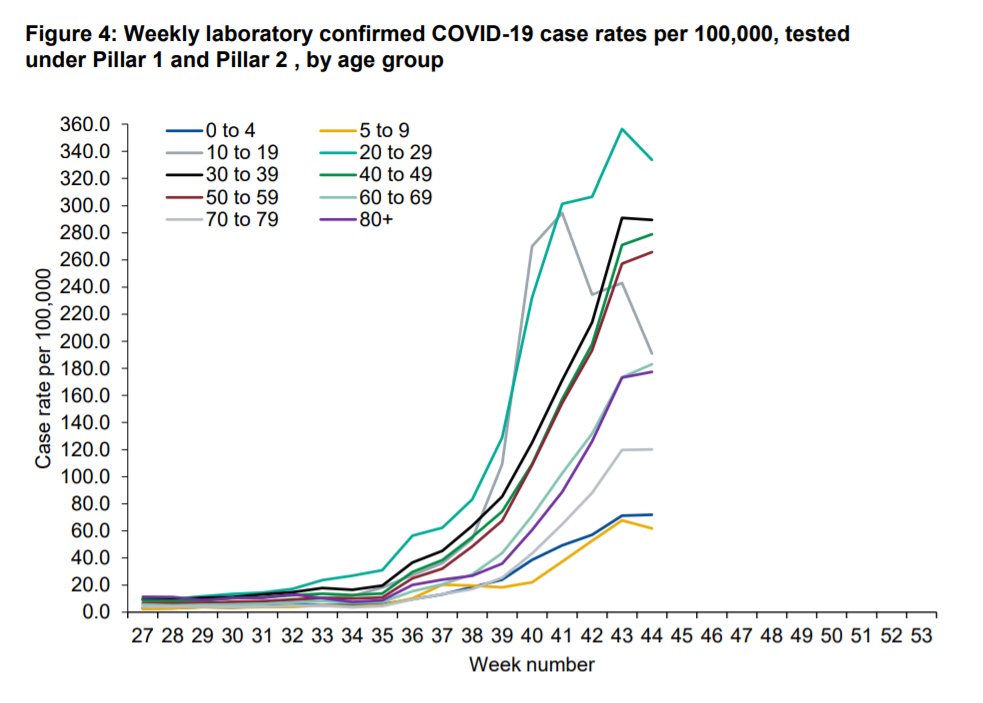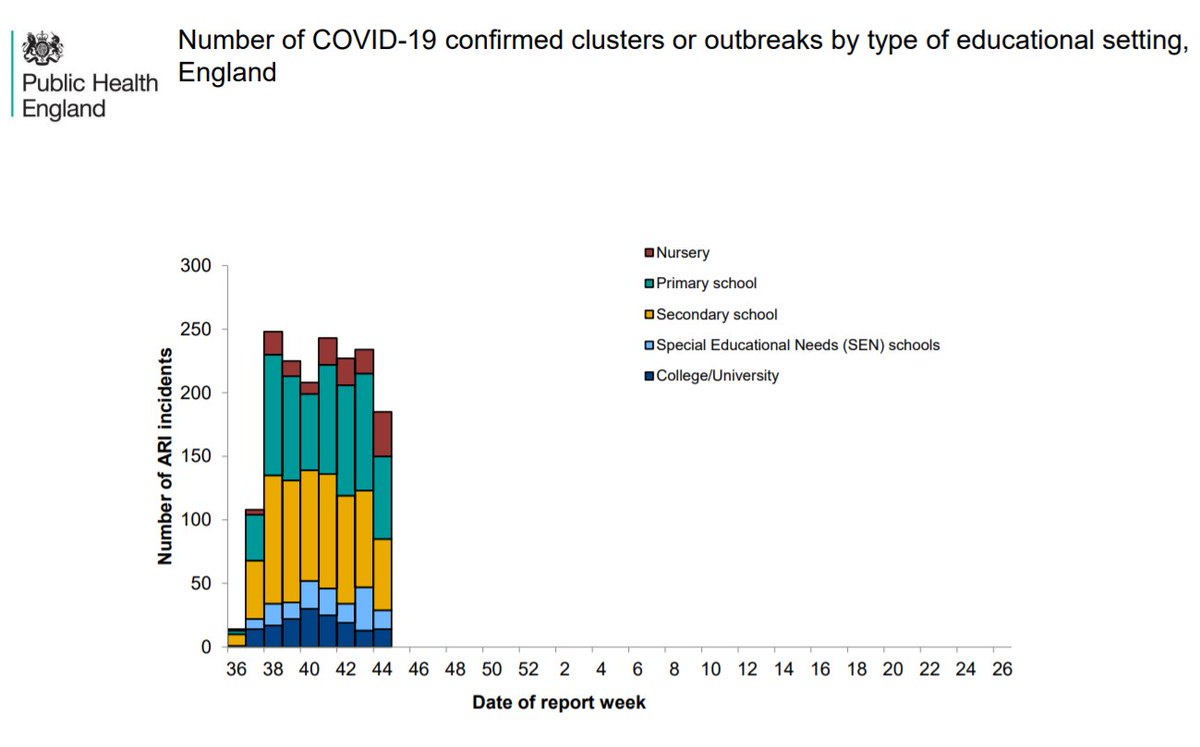
Some people are *still* lumping "children" all together in talking about transmission, schools etc
That is a dumb thing to do
It doesn't take a paediatrician to tell you a 2yr old is different from a 17yr old
Case study using data from the @ONS
ons.gov.uk/peoplepopulati…
1/8
That is a dumb thing to do
It doesn't take a paediatrician to tell you a 2yr old is different from a 17yr old
Case study using data from the @ONS
ons.gov.uk/peoplepopulati…
1/8
The @ONS performs large scale, *random* population testing via rt-PCR
People often complain test data in children is biased by lower symptom burden - that is not the case for this data
Hence, it is very informative (why aren't more countries doing this?!)
2/8
People often complain test data in children is biased by lower symptom burden - that is not the case for this data
Hence, it is very informative (why aren't more countries doing this?!)
2/8
Here is a graph of the last few weeks modelled incidence by age group
Huge initial spike in 17 - 24yr olds
Up behind then followed 12 - 16yr olds
Then 25 - 34yr olds
Then 35 - 49yr olds
Then 50 - 69yr olds
Eventually the 2 - 11yr olds get dragged up behind
3/8
Huge initial spike in 17 - 24yr olds
Up behind then followed 12 - 16yr olds
Then 25 - 34yr olds
Then 35 - 49yr olds
Then 50 - 69yr olds
Eventually the 2 - 11yr olds get dragged up behind
3/8

Here is the graph with just the children highlighted
The difference in the timing of the increase in cases is quite remarkable, and you can see the young children rates came up behind almost all adult cohorts
Why does this matter?
4/8
The difference in the timing of the increase in cases is quite remarkable, and you can see the young children rates came up behind almost all adult cohorts
Why does this matter?
4/8

It shows the reservoir for the disease is young adults/adolescents, and transmission in this cohorts bleeds into surrounding age groups
Eventually it makes its way into young children
This is a stark contrast from influenza/other respiratory viruses - the reverse in fact
5/8
Eventually it makes its way into young children
This is a stark contrast from influenza/other respiratory viruses - the reverse in fact
5/8
Note also the supposed blip in 12-16y prevalence during the school break (half term) some people were very excited about actually follows closely behind the fluctuation in prevalence in the young adults who aren't in school
But I digress...
6/8
But I digress...
6/8

The difference between age groups of "children" is highly significant when considering policy interventions and the effect they would have
e.g. targeting younger years care and education much lower yield than other interventions (and young children potentially more harmed)
7/8
e.g. targeting younger years care and education much lower yield than other interventions (and young children potentially more harmed)
7/8
Differences in older/younger children have been known for months
What we should see in the next weeks is cases declining in all children following the declines in young adults, even in spite of schools being open
This has happened in several other countries already
8/8
What we should see in the next weeks is cases declining in all children following the declines in young adults, even in spite of schools being open
This has happened in several other countries already
8/8
• • •
Missing some Tweet in this thread? You can try to
force a refresh








